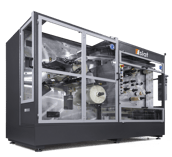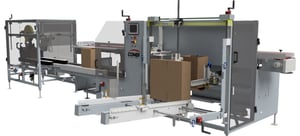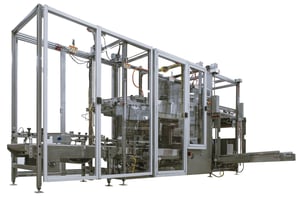Hand-packing product for final shipment is difficult work. It’s uncomfortable, physically taxing and dull. While packing isn’t a high-skill job, it’s hard to find people who do it well and are willing to stick with it.
An ergonomic packaging solution can help. It does more than protect workers from repetitive motion injuries—although that’s reason enough to consider the setup of your end-of-line packaging processes.
It improves profitability by increasing throughput, improving performance of individual employees, and reducing the physical strain that leads to high turnover and the cost of constant hiring and training, according to Shawn Beatty, VP of Sales at Combi Packaging Systems.
So what makes for an ergonomic packaging line? Here are the key variables, according to an independent engineering study performed for Combi Packaging:
Automated case erecting: Case erecting is typically the first automation that small businesses will deploy in end-of-line packaging because it not only eliminates stressful postures that people often use when assembling cases manually, it can provide a 3x-10x increase in output of assembled cases.
Automated case sealing and case transfer: Hand-sealing and transfer of cases is slow and encourages potentially harmful repetitive postures. It also consumes far more tape than automated processes.
Product and case aligned together directly in front of packer: Twisting can be eliminated by having both the product and the case aligned directly in front of the operator at the packing station.
Toe clearance: Room for workers to stand directly in front of the packing station helps to reduce forward bending needed to reach the product.
Adjustable product distance from packer: An adjustable rear rail on the product conveyor assures that products of varying sizes are guided as close to the picker as possible, minimizing bending and reaching.
Adjustable product height for picking: The height of product in the feed conveyor should be about 39 inches—allowing a large percent of the working population to perform the task without extreme shoulder flexing or forward bending. Being able to adjust the height allows accommodations for special product handling, different case types and workers with special requirements.
Proper height of case conveyor: When the case conveyor is set at the right height, the top of each case is at the same level as the product conveyor—allowing workers to slide product into cases without lifting it over the case top or flaps.
Low-friction feed conveyor surface: Sliding product across an ergonomic conveyor surface reduces lifting and handgrip force.
Adjustable speed: Work pace should be easily adjustable by controls that can be reached while standing at the packing station.
Easy loading of corrugated: A well-designed magazine to hold flattened cases will allow workers to refill it by holding bundles in a comfortable position without excessive bending, reaching, twisting or stretching.
The most common ergonomic packaging line concerns
When Beatty visits facilities, he says the most common ergonomic issues tend to involve the variability of products they handle—and the difficulty of getting products of different sizes and weights close enough to the packers.
“We focus on making sure our systems adjust to put the operator as close to product as possible. If the box is getting smaller, the operator needs to be able to get closer to the product,” Beatty says.
Often, Beatty adds, business owners will seek to automate packaging lines with the idea that it will reduce labor head count. But they get confused between automation and ergonomics.
“People tend to think they need automation when what they need is ergonomic assistance,” he says. “Whether or not you reduce head count, you still need the people you have to be able to work in a way that’s safe, efficient and productive.”
The simplest way to think about that is to aim for the least amount of movement required to drag and place product in cases. “It’s not about saving labor costs; it’s about efficiency and throughput,” Beatty says. “The larger the reaches, the slower the operator. We talk with customers about achieving a 30 percent throughput increase with the same number of people because the reach and the comfortability of our system allows the operator to work efficiently over a longer period of time. And, of course, the system is going to encourage them to work efficiently and effectively because it’s pacing them to keep up.”
Does product stack up in your end-of-line packaging process? Combi’s Ergopack hand-packing stations are flexible, high-performing cells in which all the components work together for easy controls, comfortable use and fast changeovers. Contact Combi Packaging Systems to see how we can power up your end-of-line packaging operations.

.png?width=172&name=End%20of%20Year%20Sale%20Equip%20Drop%20Down%20(172%20x%20157%20px).png)






.png?width=161&name=ProWrap%20(1).png)


